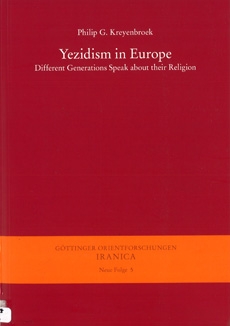
Yezidism in Europe
Philip G. Kreyenbroek
Harrassowitz Verlag
Yezidism is a small, non-proselytising religion, membership of which is determined by birth only. Traditionally it was transmitted by means of oral teachings and sacred texts that were rarely or never committed to writing. While this system allowed a great deal of flexibility and adaptability, it was not conducive to the development of a unified religious system or an explicit theology. Nor do we find a clear-cut division between the religious and secular spheres, so that it is often impossible to tell whether a given injunction, attitude, or prohibition is based upon ‘religion’ or ‘culture’. On the other hand, traditional Yezidi communities shared many elements of a deeply rooted world-view. no doubt based partly upon their precarious position in a hostile environment (see further below), but even more, it would seem, on a common mythology that is familiar to most community members, and a range of shared observances. Unlike most of the religions best known to the West, traditional Yezidism demanded orthopraxy (i.e. proper actions and observances) from its followers, rather than the sincere adherence to prescribed beliefs known as orthodoxy.
There is no absolute consensus among scholars concerning |